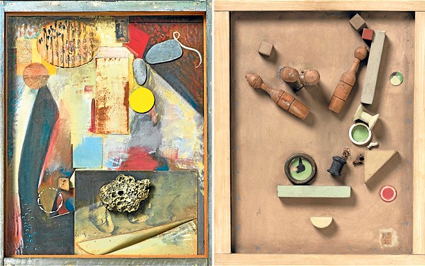“Schwitters in Britain” at Tate Britain.
A new exhibition at Tate Britain tells the strange and remarkable story of how Kurt Schwitters, leading light of the international avant-garde and exile from Nazi Germany, came to end his days, in almost complete obscurity, in Little Langdale, near Ambleside, in the Lake District. “Schwitters in Britain” is the first show to focus on the paintings, collages, sculptures, performances and installations created by the artist during his last seven years.
Born in Hanover in 1887, Schwitters came to maturity as an artist just after the First World War. His starting point was disillusionment: “everything had broken down,” he declared, “new things had to be made out of fragments.” Like the Berlin Dadaists, with whom he was sometimes linked, he regarded everything as potential raw material for art. A restless urban scavenger, he pushed painting in the direction of assemblage by affixing all kinds of found objects – half-smoked cigarettes, broken flywheels, bits and pieces of a trashed perambulator – to the surface of his canvases. Working with bus tickets, matchbox covers, fragments of newspaper, ripped swatches of wallpaper, postage stamps and a thousand other things, he also created numerous small collages of surprising delicacy and subtlety: shifting layers and grids of pure form created from the most impure materials, as if to incarnate the dream of perfecting an imperfect world. “Merz” was the collective term that he coined for his art, ironically derived from a snippet of the German word for commerce. The most ambitious work of his years in Hanover was the Merzbau, in which he transformed his own home into a labyrinth of interconnected installations, stocked with an eccentric hoard including various items of his friends’ underwear and a sample bottle of his own urine. The painter Max Ernst likened it...


